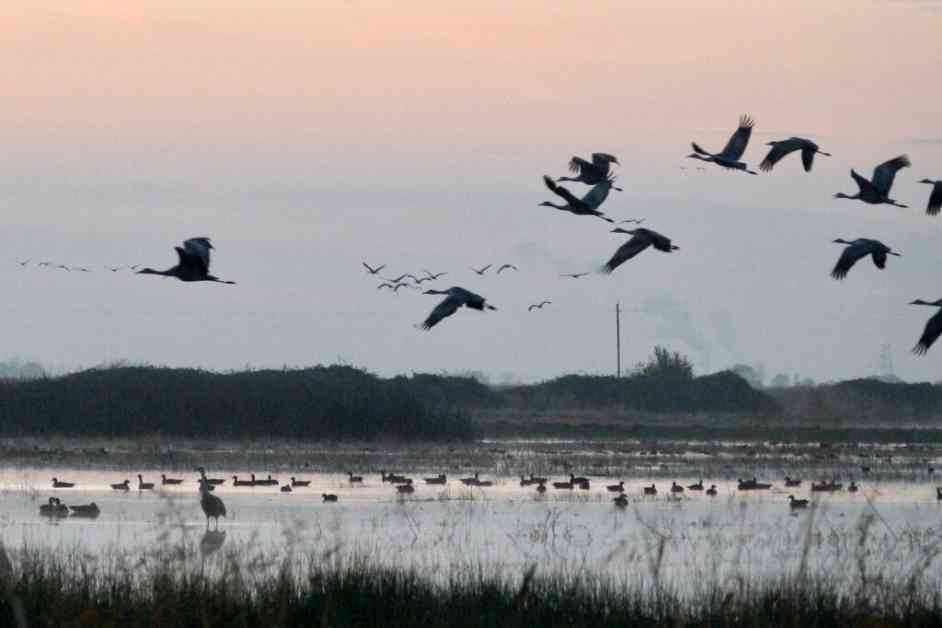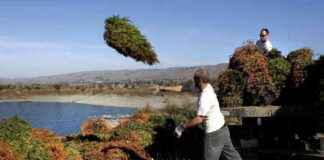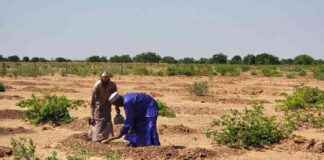California Rice Fields: A Lifeline for Threatened Migratory Waterbirds
ARBUCKLE, Calif. – In the heart of the Sacramento Valley, roughly 90 miles north of San Francisco, a unique and innovative conservation effort is underway to protect and restore critical habitat for threatened migratory waterbirds. This initiative, known as Bird Returns, is a collaborative project between The Nature Conservancy, Audubon California, and Point Blue Conservation Science, aimed at providing essential foraging and roosting sites for species in desperate need of support.
Decoys and Recordings: A Clever Conservation Strategy
In a misty December morning, a group of sandhill cranes, majestic wading birds known for their elaborate courtship dances, stood in a flooded rice field. However, upon closer inspection, these cranes turned out to be decoys, cleverly designed to attract their real-life counterparts to the area. By using lifelike plastic decoys and recordings of the cranes’ distinctive calls, ecologists have managed to entice actual birds to roost in these newly created habitats.
Greg Golet, an avian ecologist with The Nature Conservancy, expressed excitement at the prospect of seeing these migratory birds return to the same spots year after year. The success of this decoy strategy signals a promising development in the effort to expand wetland habitat for species that rely on the Pacific Flyway for their seasonal migrations.
Farmers as Stewards of Conservation
Central to the Bird Returns program is the partnership with local farmers who play a crucial role in creating and maintaining these vital habitats. Incentivized by funds provided by the California Department of Fish and Wildlife, farmers are encouraged to flood their fields during key migration periods, providing essential resources for waterbirds in need.
Andrea Jones, the conservation director at Audubon California, highlighted the importance of these partnerships, emphasizing the critical role farmers play in supporting declining species that depend on these agricultural landscapes. By working together, conservation organizations and farmers are able to create a network of habitats that benefit a wide range of migratory birds.
Challenges and Opportunities in Conservation
While the efforts to restore wetland habitats in the Sacramento Valley are promising, challenges remain. The rapid loss of natural wetlands due to urban and agricultural development has left many migratory species without crucial roosting and foraging sites. As the threat of climate change looms large, the need to create resilient habitats for these birds becomes increasingly urgent.
By leveraging innovative strategies such as decoys, recordings, and farmer partnerships, conservationists are paving the way for a brighter future for threatened waterbirds. Through continued collaboration and dedication, these efforts offer hope for the survival and recovery of these vital species in the face of mounting challenges.
As we witness the beauty and resilience of these migratory waterbirds, we are reminded of the delicate balance between human development and the natural world. By working together to protect and restore critical habitats, we can ensure that future generations will continue to marvel at the sight of these majestic creatures gracing our skies and fields.
Let us take inspiration from the sandhill cranes and their enduring journey, as we strive to create a world where conservation and coexistence are not just ideals but a way of life.














